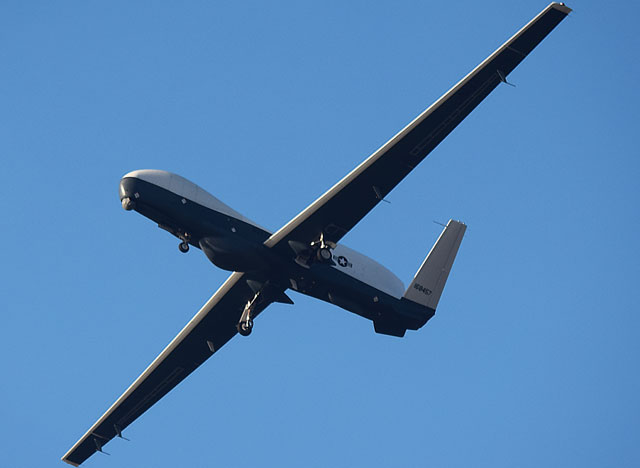The US government has approved a potential $1.2 billion sale of three Block 30-model Northrop Grumman RQ-4 Global Hawk unmanned air vehicles to Japan.
The US Defense Security Cooperation Agency (DSCA) notified Congress on 19 November of the agreed sale, which follows a type-selection by the Japanese government in 2014.
In addition to the three aircraft, three Enhanced Integrated Sensor Suites plus 16 navigation systems have been approved under the Foreign Military Sales deal.
A Japanese defence budget released in January 2015 provided Y36.7 billion ($298 million) for the Global Hawk acquisition, but a contract for the acquisition has yet to be made.
The Global Hawk approval follows the first, $151 million, order from the Japan Air Self-Defense Force on 12 November for the Northrop E-2D Advanced Hawkeye airborne early warning and control system aircraft, four of which have been approved by the DSCA for sale to the nation.
The US Navy’s Global Hawk-derived MQ-4C Triton UAV, meanwhile, began its operational assessment (OA) on 17 November: a two-month phase that will lead to a so-called Milestone C review and the start of low-rate initial production.

US Naval Air Systems Command
Triton will carry out six flights from NAS Patuxent River in Maryland over this period, performing a number of test scenarios to assess the operational performance to date, the US Naval Air Systems Command (NAVAIR) says.
NAVAIR said in August that the OA was due to begin in September.
Triton will collect data throughout the flights, and will test the intelligence, surface warfare, and amphibious warfare mission areas. It will also identify risk areas for the follow-on initial operational test and evaluation phase.
“We worked very hard to demonstrate system performance and stability leading up to the start of operational assessment,” says Sean Burke, Triton programme manager at NAVAIR. “We are eager to move into initial production as the next step to delivering Triton to the fleet.”
The USN expects to achieve a Milestone C decision in early 2016, followed by entry into low-rate initial production and a purchase for three production aircraft in 2016. It plans to order a total of 68 aircraft, with the first to become operational by 2017.
Source: FlightGlobal.com
















